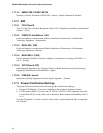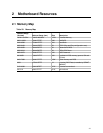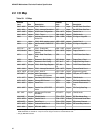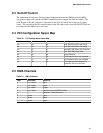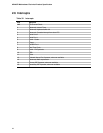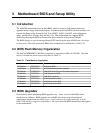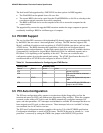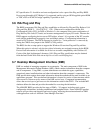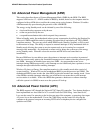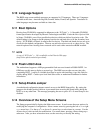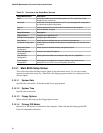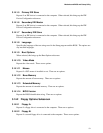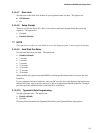AP440FX Motherboard Technical Product Specification
48
3.8 Advanced Power Management (APM)
This section describes the use of System Management Mode (SMM) by the BIOS. The BIOS
supports APM version 1.2. APM is enabled in BIOS by default; however, the computer must be
configured with an APM driver to utilize the system power saving features. Windows 95 enables
APM automatically upon detecting the presence of the APM BIOS.
The energy saving Standby mode can be initiated by one of the following:
• a keyboard hot-key sequence set by the user
• a time-out period set by the user
• a suspend/resume button tied to the front panel sleep connector.
When in Standby mode, the motherboard reduces power consumption by utilizing the Pentium Pro
processor’s SMM capabilities and also spinning down hard drives and turning off VESA DPMS
compliant monitors. The user may select which DPMS mode (Standby, Suspend, or Off) to send
to the monitor in Setup. The ability to respond to external interrupts is fully maintained while in
Standby mode allowing the system to service requests such as an in-coming fax or network
message while unattended. Any keyboard or mouse activity brings the system out of the energy
saving Standby mode. When this occurs the monitor and IDE drives are turned back on
immediately.
Because SMM uses its own address space, the pointers to interrupt service routines in protected
mode do not necessarily point to the executable interrupt service routines when the processor goes
into SMM. Interrupts are disabled upon entry into SMM. Any program that wants to use
interrupts during SMM must provide a valid interrupt service routine and place a pointer to it in an
interrupt descriptor table before renabling interrupts.
Windows 95 places an Energy Star compliant monitor in video standby mode after a period of
system inactivity. Windows 95 uses the motherboard BIOS to put the processor into SMM. The
motherboard BIOS in turn invokes the video BIOS to place the monitor into standby mode. Some
video BIOSes reenable interrupts when they are called but do not ensure that a valid interrupt
service routine is available. If the video BIOS then generates a hardware or software interrupt
while the system is in SMM, in most cases the system will lock up.
3.9 Advanced Power Control (APC)
The BIOS supports APC through the National 87307 Super I/O controller. Two features that have
been implemented are Auto Start On AC Loss and Power-On COM1 Ring. Auto Start On AC
Loss sets the control for returning to the last known state of the computer, or powering down upon
AC power loss to the motherboard. Power-On COM1 Ring sets the control for allowing the
computer to be powered on upon an incoming POTS call to a telephony device configured for
operation on COM1.



